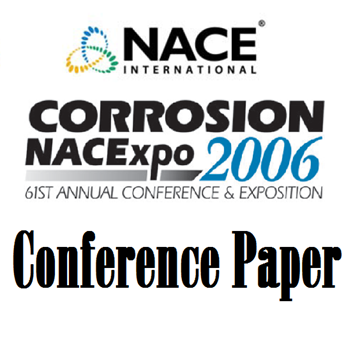Search
97106 HYDROGEN DISTRIBUTION KINETICS IN STAINLESS STEEL DURING LWR EXPOSURE
Also Purchased
01018 HYDROGEN EMBRITTLEMENT STRESS CORROSION CRACKING OF SUPERDUPLEX STAINLESS STEEL
Product Number:
51300-01018-SG
ISBN:
01018 2001 CP
$20.00
05098 A Review on Hydrogen Embrittlement of Duplex Stainless Steels
Product Number:
51300-05098-SG
ISBN:
05098 2005 CP
$20.00
06578 Sigma Phase Embrittlement of Stainless Steel in FCC Service
Product Number:
51300-06578-SG
ISBN:
06578 2006 CP
Publication Date:
2006
$20.00




